23 Passover Foods To Serve at the Sedar in 2025
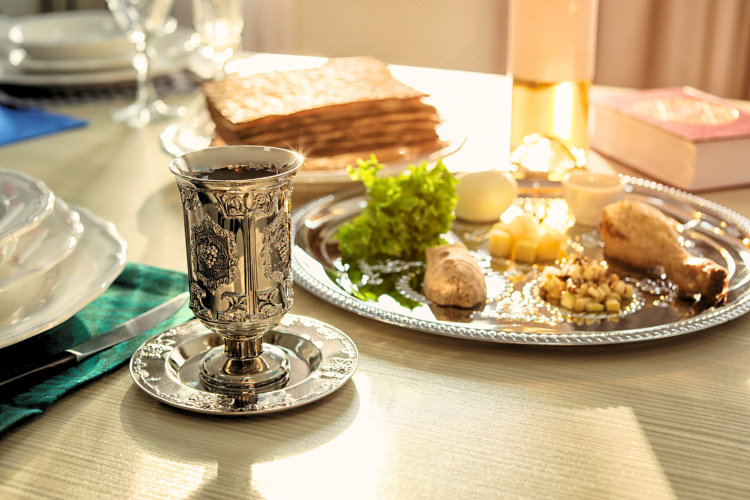
Knowing what Passover foods to make each year for the Passover meal (or the Seder) can be quite tough, as you need to blend traditional meals with modern needs. While you may have your go-to recipes, it’s always exciting to add new delicious flavors to the meal. The start of Passover should be marked with spiritual celebration and community, not stress in the kitchen.
Whether you're celebrating the Seder for one night or two, you still need a menu of delicious Passover foods to serve your family and guests. Use this article to find easy, vegan, vegetarian and traditional Passover foods that please a crowd.
Jump to Section
Passover Food Ideas
What food do you eat on Passover? Everyone is different and each family chooses to serve different meals. As long as the Passover foods that you serve are kosher and don't contain any chametz (foods with leavening agents, forbidden during Passover), you should be fine. Read on for traditional Passover food and a few Passover recipes.
1. Matzo Ball Soup
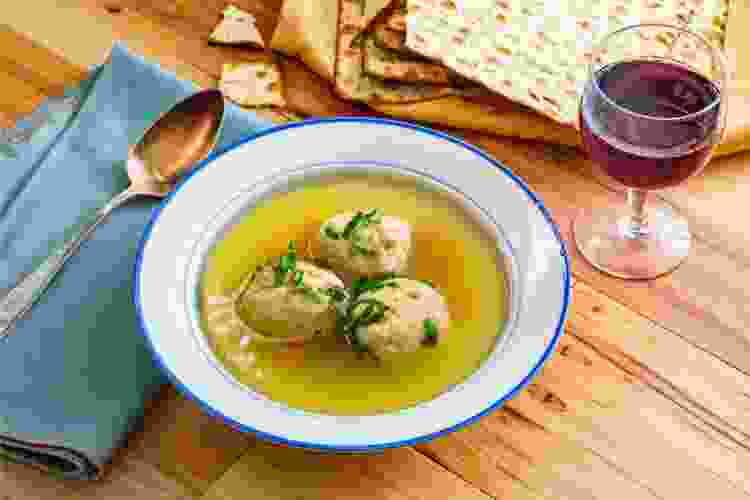
While this dish could be eaten any time of the year, with some families having it as a staple Hanukkah food, matzo ball soup is mostly reserved for Passover. It's a comforting and flavorful dish that includes chewy balls made from matzo (unleavened bread and one of the traditional Passover foods) as the main feature.
Start preparing the matzo balls by mixing 1 cup of matzo meal, 4 beaten eggs, ¼ cup of schmaltz (or vegetable oil), ¼ cup of water, 1 teaspoon of salt and a pinch of black pepper. Chill the mixture for 30 minutes, then roll into balls and drop into simmering salted water. Cook for about 30 minutes until tender.
Meanwhile, in a large pot, bring 8 cups of chicken broth to a boil, adding sliced carrots, celery and fresh dill. Once the matzo balls are cooked, transfer them to the soup and let them simmer for a few more minutes before serving.
2. Sephardic-Style Haroset
Haroset is another one of the traditional Passover foods that is one of the main features on the Seder plate. It's a sweet condiment that's also rich and fragrant as it blends dried fruits, nuts and warm spices, creating a luscious spread that pairs beautifully with matzo. It’s one of the best Passover recipes by far as it holds a very special symbolism, representing the mortar used by enslaved Jews to build structures for the Pharoah. The sweetness lets us know that even in the worst of times, there is hope.
To make it, pulse 1 cup of pitted dates, ½ cup of dried figs and ½ cup of raisins in a food processor until finely chopped. You can also use apples. Add ½ cup of chopped walnuts or almonds, 1 teaspoon of cinnamon and a pinch of ground cloves. Mix in ¼ cup of sweet red wine and 1 tablespoon of honey until the mixture reaches a paste-like consistency. Let it sit for an hour before serving so the flavors meld.
3. Mini Lox Potatoes Appetizer
These bite-sized delights combine crispy roasted potatoes with creamy lox and tangy toppings. Slice small red potatoes in half, toss with olive oil, salt and pepper and roast at 400°F for 25 minutes until golden. Let them cool slightly, then top each potato half with a dollop of pareve dairy-free sour cream, a slice of smoked salmon and a sprinkle of chopped chives or red onion. Finish with a few capers for a salty pop and serve as a delicious appetizer for your Seder.
4. Fried Artichokes
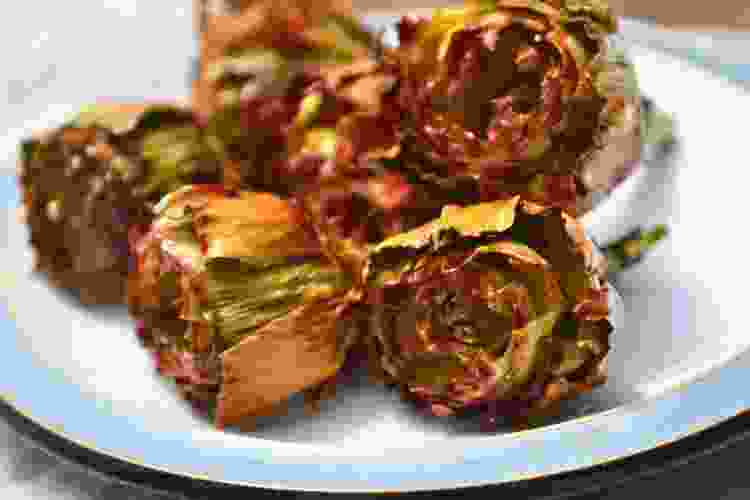
Crispy and golden, fried artichokes bring a delightful crunch to the Passover table. Inspired by the Roman-Jewish tradition of Carciofi alla Giudia, these artichokes are deep-fried until their edges are beautifully crisp, resembling a blooming flower. Their earthy yet slightly nutty flavor pairs well with a squeeze of fresh lemon. Artichokes symbolize renewal and abundance, making them fitting Passover foods celebrating freedom and new beginnings.
5. Roasted Hard-boiled Egg
A symbolic Passover dish, the roasted egg represents renewal and sacrifice. Hard-boil eggs as usual, then place them in a dry skillet over medium heat. Roast, turning occasionally, until browned and lightly charred, about 10 minutes. Serve alongside salt water for dipping, enhancing the egg’s deep, smoky flavor.
6. Carrot Salad
Sweet and slightly tangy, carrot salad is a refreshing counterpoint to heavier Passover dishes. Dress this salad with lemon juice, olive oil and warm spices like cumin or cinnamon, this salad carries a delicate balance of flavors. Carrots, often associated with prosperity, have a long-standing presence in Jewish cuisine and their natural sweetness evokes the hope and optimism central to Passover.
7. Roasted Asparagus
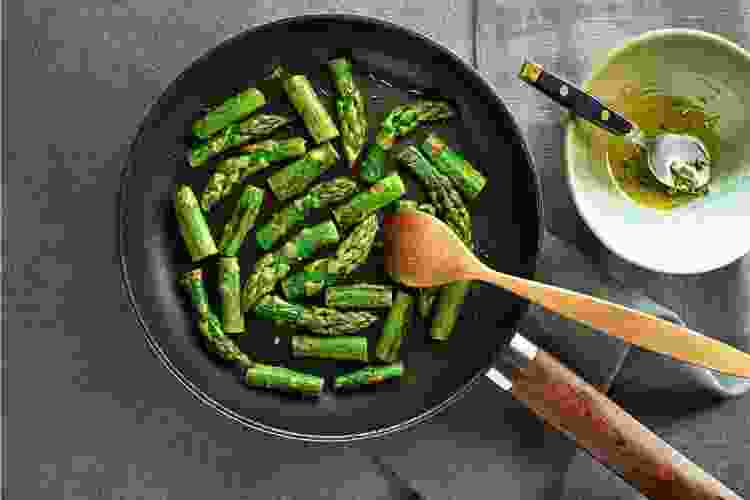
Simple and elegant, roasted asparagus is a staple Seder side dish. Trim the woody ends from 1 bunch of asparagus and toss with 2 tablespoons of olive oil, salt and pepper. Spread on a baking sheet and roast at 400°F for 12–15 minutes until tender and slightly charred. Finish with a squeeze of lemon juice and a sprinkle of sea salt. This is one of the easiest vegan Passover foods and a simple crowd-pleaser.
8. Artichoke Soup
Rich and velvety, artichoke soup provides a comforting warmth to the Seder meal. Blended until smooth with onions, garlic and potatoes, this soup has a creamy, slightly sweet and nutty flavor. The artichoke’s complexity makes it an elegant dish, offering a sophisticated first course that cleanses the palate before the main meal.
9. Tahini-Glazed Roasted Carrots
Enjoy a fusion of nutty tahini and caramelized roasted carrots, this dish brings depth to your Passover foods. The glaze, made with tahini, honey and a touch of lemon, creates a creamy, slightly tangy coating that enhances the carrots' natural sweetness. Roasted to perfection, they develop a tender texture with crisp, caramelized edges, symbolizing resilience and transformation in the Passover story.
10. Roasted Beet Salad with Kale and Maple Balsamic
This visually stunning salad bursts with earthy and sweet flavors. The roasted beets provide a deep, almost wine-like sweetness, while kale adds a hearty, slightly bitter contrast. The maple balsamic dressing rounds out the dish with a blend of tangy and sweet notes. As beets symbolize the richness of the earth and kale represents strength, this salad embodies nourishment and vitality at the Seder table.
11. Herb Braised Lamb Shanks
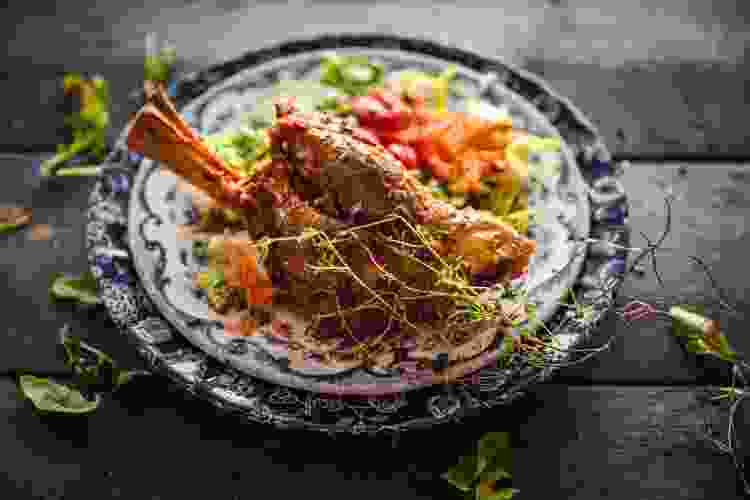
Slow-braised in a rich broth with rosemary, thyme and garlic, herb-braised lamb shanks are a classic Passover main course. Tender and deeply flavorful, the lamb’s natural richness is balanced by aromatic herbs, making it a dish steeped in both tradition and taste. Lamb symbolizes the Korban Pesach (Passover sacrifice), a direct link to the biblical roots of the holiday.
As the meat slowly cooks, it absorbs the fragrant spices and becomes fall-off-the-bone tender, creating a comforting and hearty dish. Often served with mashed potatoes or matzo, it provides a deeply satisfying meal that brings families together around the Seder table.
12. Curry Roasted Sweet Potatoes
A bold, spiced side dish, these sweet potatoes are irresistible. Cube 2 large sweet potatoes and toss with 2 tablespoons of olive oil, 1 teaspoon of curry powder, ½ teaspoon of salt and a pinch of cayenne. Roast at 400°F for 30 minutes, flipping halfway through, until golden and tender. Garnish with fresh cilantro before serving. This is a solid addition to vegan Passover foods, though we recommend making it right before serving the meal, as the potatoes do not keep well.
13. Pomegranate Glazed Salmon
This sweet and tangy salmon is a family favorite and aesthetically appealing too. Whisk together ½ cup of pomegranate juice, 2 tablespoons of honey and 1 tablespoon of Dijon mustard. Brush over salmon fillets and bake at 375°F for 15–18 minutes. Garnish with pomegranate seeds and fresh parsley before serving.
14. Braised Brisket in Cranberry Sauce
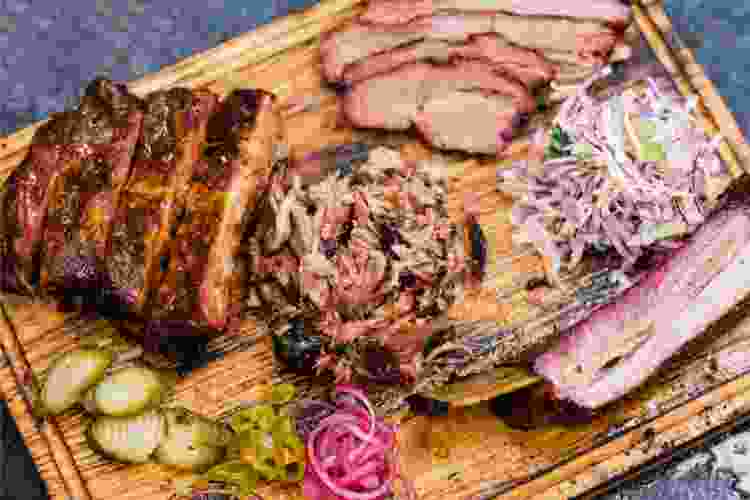
A sweet and tangy twist on a beloved Jewish staple, brisket braised in cranberry sauce combines slow-cooked, melt-in-your-mouth beef with the bright, slightly tart flavor of cranberries. This dish embodies warmth and tradition, as brisket has long been a symbol of Jewish holiday gatherings, cooked low and slow to bring out its full, comforting potential.
15. Mediterranean Fish in Sauce
This vibrant dish highlights white fish simmered in a spiced tomato-based sauce with garlic, peppers and fresh herbs. This dish is a light yet bold main course with a balance of sweetness, acidity and a touch of heat. The combination of tomatoes, paprika and fragrant spices creates a deeply flavorful sauce that enhances the delicate texture of the fish. Often garnished with fresh cilantro or parsley, this dish not only adds color to the Passover table but also provides a nutritious and refreshing contrast to heavier holiday fare.
16. Rosemary Chicken and Potatoes
Perfectly roasted chicken with rosemary and potatoes is a simple yet deeply flavorful dish. The crispy-skinned chicken, infused with rosemary, garlic and lemon, pairs beautifully with golden, herb-roasted potatoes. As the chicken roasts, the rosemary releases its earthy aroma, filling the kitchen with an inviting scent that signals a comforting meal. This dish represents family unity and comfort, a reminder of the home-cooked meals that define Passover foods. Served with a side of roasted carrots or a fresh salad, it completes a wholesome and satisfying holiday feast.
17. Flourless Chocolate Cake

Bring over one of these rich and decadent cakes as one of the sweetest Passover foods. It will be one of the most well-received presents you ever give. Melt 8 ounces of dark chocolate with ½ cup of butter. Whisk in ½ cup of sugar and 3 eggs. Fold in ¼ cup of cocoa powder and bake at 350°F for 25 minutes.
18. Unstuffed Cabbage Rolls
A deconstructed take on a classic. All you have to do is sauté ground beef with onions, garlic and diced tomatoes. Stir in shredded cabbage and simmer until tender. This is one of the easier Passover recipes that anyone can make when in a rush.
19. Candied Lemon Peels
Sweet, tart and slightly bitter, candied lemon peels offer a bright, zesty finish to the meal. The sugar coating softens the lemon’s natural sharpness, creating a chewy, jewel-like confection. These treats symbolize renewal and cleansing, much like the role of citrus in Jewish traditions. Pop them on your grazing table so guests can pick at them throughout the evening. They are one of the best finger food ideas for the Sedar meal.
20. Coconut Macaroons
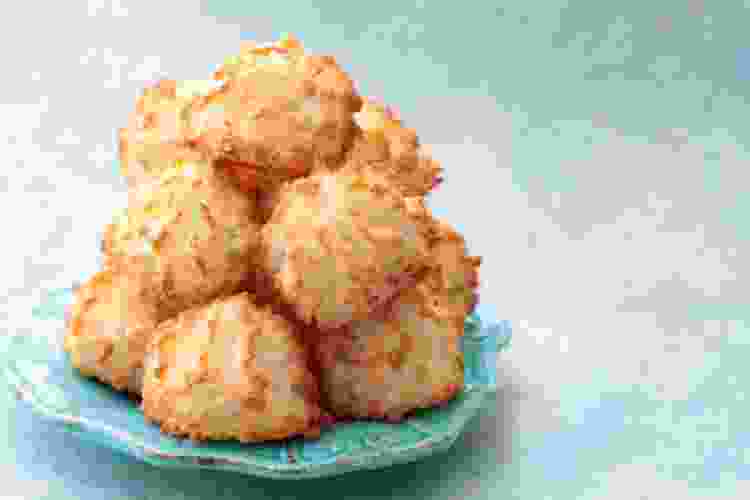
A Passover treat, coconut macaroons are chewy, sweet and lightly crispy on the outside. Made with egg whites, shredded coconut and sugar, they offer a naturally gluten-free and unleavened dessert, excellent for adhering to Passover dietary laws. While these treats certainly were not invented specifically for the Seder, their delicate yet satisfying texture makes them a must-have for the holiday.
21. Coffee Meringues
Light as air, coffee meringues melt in your mouth with a delicate crunch. Infused with the deep, aromatic notes of coffee, these treats offer a sophisticated, slightly bitter contrast to their sweetness. As a pareve Passover dessert, they’re a great option for ending a rich meal without dairy, making them one of the best vegan Passover foods.
22. Chocolate Toffee Matzo
This irresistible chocolate toffee matzo combines crisp matzo, buttery caramel and rich chocolate for a sweet Passover treat. To make it, preheat your oven to 350°F and line a baking sheet with parchment paper. Arrange 4 sheets of matzo in a single layer. In a saucepan, melt 1 cup of butter (or margarine) with 1 cup of brown sugar, then let it bubble for 3 minutes. Pour the hot caramel over the matzo, spreading evenly and bake for 10–12 minutes until bubbly.
Remove from the oven and immediately sprinkle 1½ cups of chocolate chips over the caramel. Let sit for a few minutes, then spread into an even layer. Sprinkle with chopped nuts or flaky salt if desired. Chill in the fridge for an hour until set, then break into pieces.
23. Kosher Wine
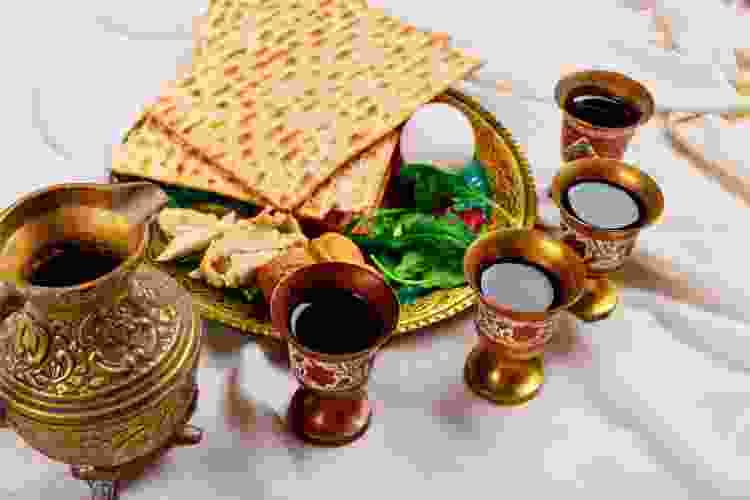
Wine plays a significant role in the Seder, with the tradition of drinking four cups throughout the evening. Choosing bottles that you and your guests will enjoy is well worth the effort — and it doesn’t have to be a costly endeavor. This evolving roundup highlights excellent kosher wines that are both delicious and affordable.
That said, while wine is customary, some guests may prefer grape juice for medical or personal reasons. Offering it at the table ensures that everyone can participate comfortably, without feeling the need to explain their choice or disclose personal circumstances.
Use these Passover foods to help create a meal that’s rich in tradition and flavor. Each bite brings a connection to history and the shared experience of family and friends. However you choose to celebrate, may your meal be filled with warmth, joy and plenty of good food to savor, much like the Festival of Lights with all of the shiny and vibrant Hanukkah decorations and meaningful Hanukkah gifts.
For even more fun Passover ideas, check out other experiences happening on Classpop!

